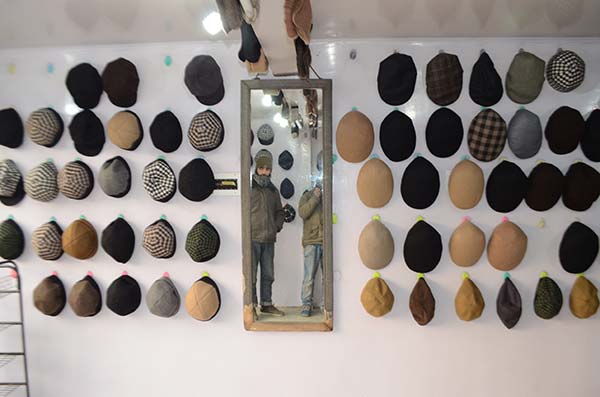By Shah Faesal

On February 16, morning I started off from Baglihar with my team of engineers to take stock of pre-construction works of one of the most ambitious hydropower-projects of J&K – 1856 MW Sawalkote HEP – first conceived in early 1960’s. For me, it was a unique journey because I had never been to any place in the interiors of Jammu division. No doubt I have always justified my ignorance as a part of the larger disconnect between people from three regions of the J&K State – Jammu, Kashmir, Laddakh – with very few of us in one region interested in the life and culture of people in the other region. But nevertheless, this ignorance has always bothered.
We followed the narrow road that takes off from Srinagar-Jammu National Highway towards Tanger. If it rains, it is very risky to travel in this area due to likelihood of shooting-stones and landslides. But the weather was pleasant. The road winds along the mountains on the left bank of mighty river Chenab, goes up and up in a dizzying spiral, pine enclaves, glacial streams, scattered habitations and blind curves making it a roller-coaster ride. All along the journey, I was calculating with myself the likely expanse of future Sawalkote reservoir and the submergence it would cause. The age old dilemmas of maintaining a balance between needs of the man and needs of the nature, the imperatives of sustainable development were running in a loop inside my mind. The mountains echoed with so many questions that accompany the process of development.
Nevertheless, we drove with care along the meandering mountain road, the under-construction railway track running along the ridge-line on our left like an evenly placed razor-cut in the cheek of a beautiful child. At many places where the side-slopes had shed their burden of gravel, a few yellow-coloured earth-movers moved their dreadful tentacles, scooping loose soil with anger, more so because their sahib was on tour. It was an interesting sight to see machines trying to please a man. I was told that in-spite of hundreds of crores of investment, the mountain was just not ready to yield and while we cleared the track ahead the mountain filled it back behind us. This tussle between the mountain and our engineers has been going on for long now and both sides have not been giving up.

At Tanger, while we talked about minimizing the environmental impact of the project, I noticed an amazing ancient pyramid-like structure built entirely of wood.
The locals informed me that it was a very old Naga Devta temple that has been there in the village for-ever. I called it a Temple Gazebo because it was a beautiful structure of shingles raised over four large beams of wood in a square foundation. There is a small stone-ridge in the centre of the temple which reminded me of Harmukh. In fact I had a little theory that may be the temple had been constructed to replicate the shape of Harmukh Mountain along with the conical rock underneath. Harmukh is the home of Shiva, one of the principal deities of Kashmiri Hindus.
It was a pleasant coincidence that I had come across this lesser-known monument at a time when Kashmiris were celebrating Herath– a festival deeply rooted in the inclusive culture of Kashmir.
At around hundred metres from this site, I found the ruins of an ancient temple along with two mounted rock-horses.
These rock-horses are regularly found in this area and some researchers say these have Greek markings and may have something to with arrival of Alexander the Great to this part of the world many centuries back. Some say that these rock monoliths depict the life of Gujjar-Bakerwal nomads who undertake seasonal migration- transhumance. Yet another opinion is that these are like the Terracota Army of Qin Shi Huang the first emperor of China. This mystery has not been resolved yet.
Then, I traced a rock panel with many deities carved on it. This sculpture shows a female with something like a pitcher over head. I have not found any record related to this so far. May be the mystery can be solved by archaeologists.

Local residents told me that although this village has a mixed population, the Hinuds and Muslims have been living in perfect harmony. Due to onset of developmental activities in the area, people are happy that they are getting jobs at their door-step. But development also brings along tensions and greed and it was heartening to see that the locals want to enjoy the developmental spin-offs associated with mega-project without giving up on their traditional values of brotherhood.
There is extensive tunnel-work going on in this area, bridges are under-construction, nallas are being tamed. While I was happy that the project may bring in an economic turn-around for the state, I also realised the immense responsibility that such projects put on our shoulders to minimise damage to local culture and environment. We promised the local community that we would continue visiting the place and will work closely with them.
(Shah Feasal, IAS is the Managing Director of J&K’s fully owned State Power Development Corporation.)















